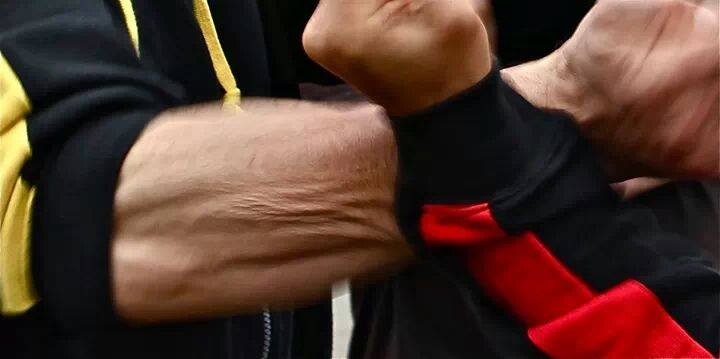Collision and Tension in Wingchun

Many people put martial arts into the two categories - hard (external) style and soft (internal) style. But what does hard and soft really mean? For some, a soft style means avoiding or reducing physical impact, cultivation of chi energy, relaxation of the muscles, and/or using technique instead of speed and strength. Attributes of a hard style are opposite like conditioning the body, training speed, and strength, etc. Using those criteria, WingChun is both. However, the description of hard and soft is a bit too general in terms of the physics of a real-world encounter and may be misleading if taken too literally.
In WingChun, much emphasis is spent on how to defend against pressure (pushing) and striking. There is little to no impact when someone pushes, however, defending a strike results in a collision with your arms because of the speed and distance. You might feel a little pain or get a bruise on your arm, but at least the target was protected. Of course, you can do things to avoid or reduce the impact on the arms such as positioning and timing, but we cannot ignore that collisions happen. Therefore, we must prepare for collisions because we don’t know if someone will hit, push, or grapple with us.
Whether you use your arms to defend a push or strike, they need a strong frame to keep the attack from reaching its target. What holds the frame together is muscle tension. Of course, you don’t want to strain, but the arms will be useless and collapse if they are too relaxed. Therefore, good technique requires proper coordination of the muscles as well as arm, body, and stance alignment.